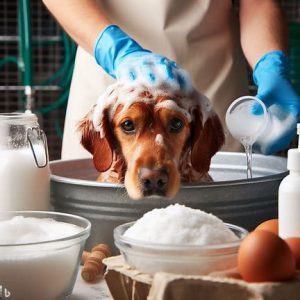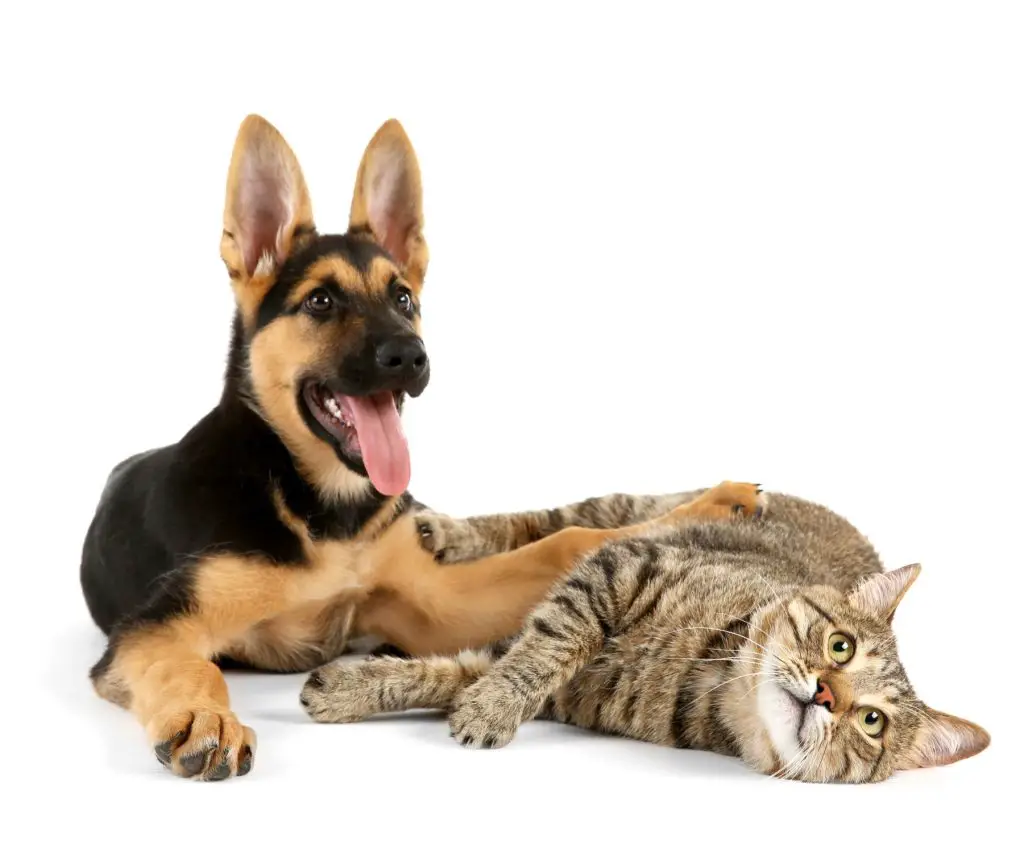Table of Contents
Does Baking Soda Kill Fleas
 Yes, baking soda is an effective pesticide-free way to kill fleas in your home due to its desiccant properties that dehydrate the waxy outer layer of fleas, disrupting their body’s ability to retain moisture causing dehydration and death. However, baking soda alone is often not sufficient to fully eliminate an infestation.
Yes, baking soda is an effective pesticide-free way to kill fleas in your home due to its desiccant properties that dehydrate the waxy outer layer of fleas, disrupting their body’s ability to retain moisture causing dehydration and death. However, baking soda alone is often not sufficient to fully eliminate an infestation.
What Makes Baking Soda Toxic to Fleas?
The fine particles of baking soda have abrasive and desiccant properties that are well-suited for killing fleas:
- The abrasiveness damages the waxy outer cuticle layer that protects adult fleas from dehydration.
- It absorbs oils and moisture from flea eggs and larvae, hindering their development.
- The dehydration effect then leads to the death of all flea life stages.
According to veterinary entomologist Michael Dryden, the microscopic particles of baking soda bind to the waxy cuticle of fleas. This allows water inside the insects to gradually evaporate, leading to desiccation and death.
How Quickly Does Baking Soda Kill Fleas?
Baking soda starts killing fleas within several hours. But leaving the powder on infested areas for 24-48 hours is recommended for full effectiveness:
- Flea eggs die within 48 hours as the baking soda inhibits further development.
- Larvae are also neutralized and unable to mature into adults.
- Adult fleas suffer abrasions to their cuticle and slowly dehydrate to death over 24-48 hours.
Vacuum up any remaining flea dirt and baking soda residue after 1-2 days. Repeat treatment as needed until fleas are eradicated.
Using Baking Soda on Dogs
Sprinkling baking soda lightly into your dog’s coat during bath time can safely kill fleas on dogs. Follow these tips for proper usage:
- Work a small amount of baking soda down to the skin when washing.
- Let sit for 5-10 minutes before rinsing thoroughly.
- Avoid getting near eyes, nose, and mouth.
- Pat skin dry afterwards and monitor for any irritation.
- Always consult your veterinarian first.
The American Kennel Club recommends using extreme care when using baking soda on dogs. It can be drying on sensitive skin. Seek veterinary advice before use, especially on elderly dogs or those with skin allergies.
Safety Precautions for Dogs
Take the following safety precautions when using baking soda on dogs:
- Avoid getting baking soda near your dog’s eyes, nose, or mouth to prevent irritation or inhalation.
- Monitor skin for any redness, dryness, or flaking after use.
- Discontinue use if skin irritation, digestive issues, or respiratory distress occur.
- Limit bath time with baking soda to 5-10 minutes max to prevent over-drying the skin.
- Do not let dogs lick themselves immediately after application to prevent ingestion.
- Consult your veterinarian before use, especially if your dog has sensitive skin.
Using Baking Soda on Cats
Use baking soda very sparingly on cats, as their skin is particularly sensitive. Gently rub a small amount into your cat’s coat during bathing. Rinse thoroughly after 3-5 minutes max to avoid skin irritation. Focus on flea control treatments specifically for cats like monthly spot-on treatments. Monitor your cat closely when using baking soda and discontinue use at the first sign of distress or skin reaction.
How to Apply Baking Soda to Carpets
Baking soda can effectively kill flea eggs and larvae hiding deep in carpeting fibers. Follow these steps:
- Thoroughly vacuum the entire carpet to remove any dirt and debris.
- Generously sprinkle baking soda over the carpet, focusing on high-traffic areas.
- Let the baking soda sit for 24-48 hours to fully penetrate the carpet fibers.
- After 1-2 days, vacuum up the baking soda.
- Immediately dispose of the vacuum contents in a sealed bag.
- Steam clean carpets afterwards to further sanitize and remove allergens.
- Repeat daily until no more fleas are seen.
Using Baking Soda on Furniture
Fleas often infest furniture where your pets sleep and rest. Follow these steps to kill fleas in upholstered furniture with baking soda:
- Vacuum furniture thoroughly to remove debris.
- Sprinkle baking soda generously over surfaces and into crevices.
- Let sit overnight for 8-12 hours.
- Vacuum up the baking soda the next day.
- Use a flea comb to pick up any remaining fleas.
- Spray steam onto cushion surfaces to further clean and sanitize.
- Repeat daily until fleas are gone.
 Using Baking Soda in Pet Bedding
Using Baking Soda in Pet Bedding
Flea eggs and larvae thrive in pet bedding. Baking soda can kill fleas and larvae lurking in these areas through dehydration. Here’s how to apply it:
- Wash all removable covers on the hottest setting possible.
- Vacuum any remaining bedding to remove debris.
- Generously sprinkle baking soda and rub it thoroughly into fabrics.
- Allow baking soda to penetrate for 24 hours.
- Vacuum up the next day.
- Wash and dry on high heat again before reuse.
Replace any bedding that can’t be washed. Repeat application daily until all signs of fleas are gone.
Using Baking Soda in Your Car
Fleas often hitch rides in cars and infect the upholstery. Use baking soda to kill fleas in your vehicle’s interior:
- Thoroughly vacuum the seats, floors, cracks and trunk to remove debris.
- Generously sprinkle baking soda across all fabric surfaces. Use a brush to rub into fibers.
- Roll down windows slightly to allow air circulation.
- Leave baking soda in place for 48 hours to fully penetrate.
- After 2 days, vacuum up all the baking soda.
- Use a steam cleaner on seats and floors to sanitize.
Check under seats and mats carefully for any remaining fleas. Repeat treatment as needed until all fleas are gone.
Using Baking Soda Outside
Baking soda can also help kill fleas in your backyard. Apply with caution around landscaping and avoid breathing in the powder. Here are some tips:
- Focus on shady, moist areas where pets rest or sleep.
- Lightly sprinkle baking soda onto grass, soil, and under bushes.
- Reapply after heavy rain or watering that may displace the powder.
- Concentrate on areas protected from sun and wind for best results.
The desiccant properties in baking soda disrupt the flea life cycle outdoors too. Combine with yard sprays and foggers for comprehensive flea elimination.
Baking Soda Flea Control FAQ
How Much Baking Soda Do I Use?
Use about 1/4 cup baking soda per square yard of carpet or soft furnishings initially. Heavily infested areas may need repeated applications with 1/2 cup per square yard.
How Often Should It Be Applied?
Treat all infested areas every 2-3 days until gone. Then continue monthly application to prevent reinfestation.
How Soon Before It Kills Fleas?
Baking soda begins killing fleas after a few hours. Leave on for 24-48 hours for full effects.
Can Baking Soda Be Combined With Salt?
Salt adds additional abrasive and dehydration properties. But use very sparingly mixed with baking soda to avoid irritating pets’ skin. The ratio should be no more than 1 teaspoon salt per 1 cup baking soda.
 Can Baking Soda Be Combined With Other Natural Remedies?
Can Baking Soda Be Combined With Other Natural Remedies?
Essential oils like lavender, tea tree, and citrus can help repel fleas. Mix a few drops into the baking soda. Diatomaceous earth is also a desiccant that kills fleas. Layer applications of both baking soda and diatomaceous earth.
Is Baking Soda Safe Around Pets?
Use carefully around pets as outlined earlier. Avoid inhaled powder and monitor skin closely. Talk to your vet first if your pet has sensitivities.
Can Baking Soda Hurt Houseplants?
Too much baking soda can alter soil pH and damage plants. Use sparingly in gardens and avoid plant roots. Rinse off leaves after treatment.
How Does Baking Soda Compare to Other Flea Treatments?
Baking soda can be a helpful supplemental treatment but often won’t fully eliminate large infestations. For best results, combine with flea medicine for pets, thorough vacuuming, professional pest control, steam cleaning, and hot laundry.
Treating Flea Bites on Humans with Baking Soda
While it doesn’t repel fleas, baking soda can provide relief from irritating flea bites on human skin. It has soothing properties to reduce inflammation and itching:
- Make a paste with equal parts baking soda and water. Apply to bites to exfoliate and reduce swelling.
- Add 1 cup baking soda to a warm bath to alleviate itching all over the body.
- Dust some baking soda lightly over the bite area to relieve discomfort.
Baking soda’s antiseptic effect helps prevent infection as the bites heal. Use after scratching to remove any lingering saliva.
Preventing Future Flea Infestations
After eliminating fleas, be vigilant with prevention methods to avoid reinfestation. Follow these tips year-round:
- Treat pets year-round with veterinarian-recommended flea control.
- Vacuum floors and furniture 1-2 times per week.
- Wash all pet bedding weekly on high heat.
- Use flea combs to check for fleas after pets have been outside.
- Apply monthly flea treatments in the home.
- Treat the yard during warm seasons when fleas are active.
- Keep grass mowed and bushes trimmed to reduce flea habitats.
Catching new flea infestations early before they multiply is key. Be proactive with year-round prevention!
Flea Infestation Statistics
- Veterinarians report that 21% of cats and 19% of dogs have a flea infestation in any given year.
- On average, about 50 fleas need to be present on a pet before substantial hair loss and skin irritation occurs.
- A single female flea can lay up to 50 eggs per day, allowing populations to rapidly increase.
- 17% of dogs with fleas are also infected with tapeworms transmitted by fleas.
Making DIY Flea Traps
Simple homemade flea traps can help capture and contain adult fleas to reduce breeding. Try this easy trap:
- Take a lamp shade and place it upside down on a disposable pie pan.
- Fill the pan with soapy water up to the edge.
- Place a nightlight or candle in the lampshade to attract fleas overnight.
- Put the trap on the floor or furniture in pet resting areas.
- Empty the drowned fleas in soapy water each morning.
Keep traps away from pets and use caution with open flames. Traps complement other flea treatments.
Professional Flea Treatment
For severe infestations, professional exterminators have access to powerful insecticides and insect growth regulators that fully eliminate flea populations. They can treat all affected areas inside and outside the home. Professional heat treatments effectively kill all life stages by raising interior temperatures to over 120°F.
According to pest control experts Orkin: “Baking soda can help remove fleas from carpets and bedding when used in combination with vacuuming, but it’s not a standalone treatment.” Rely on professional help for large-scale flea removal.
The Takeaway
When used properly, baking soda can be a helpful natural supplement to your flea removal efforts. The abrasive texture and desiccant properties allow it to effectively kill flea eggs, larvae, and adults in your home. For best results, use baking soda together with thorough vacuuming, washing pet items, flea medicine for pets, yard treatment, and professional help if needed. Consistent prevention is key to keeping fleas away for good!


 Using Baking Soda in Pet Bedding
Using Baking Soda in Pet Bedding Can Baking Soda Be Combined With Other Natural Remedies?
Can Baking Soda Be Combined With Other Natural Remedies?